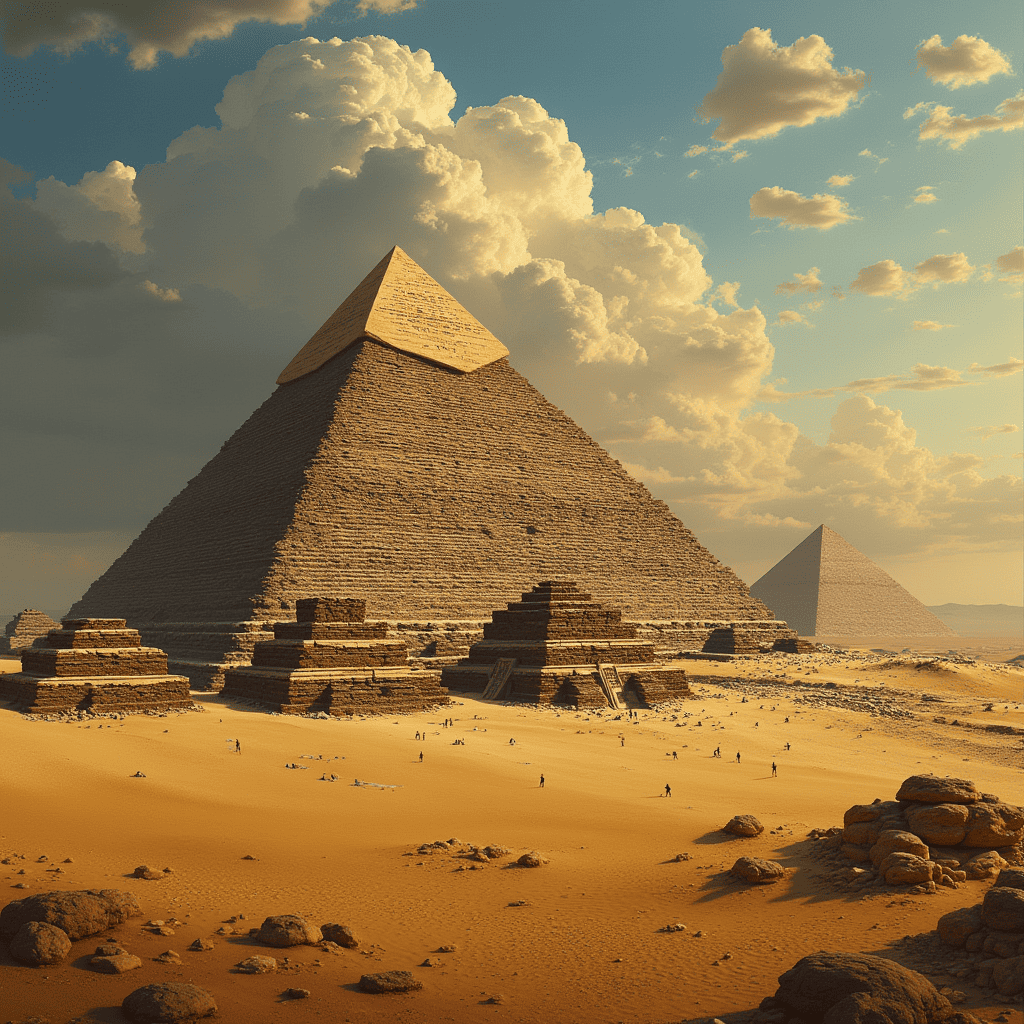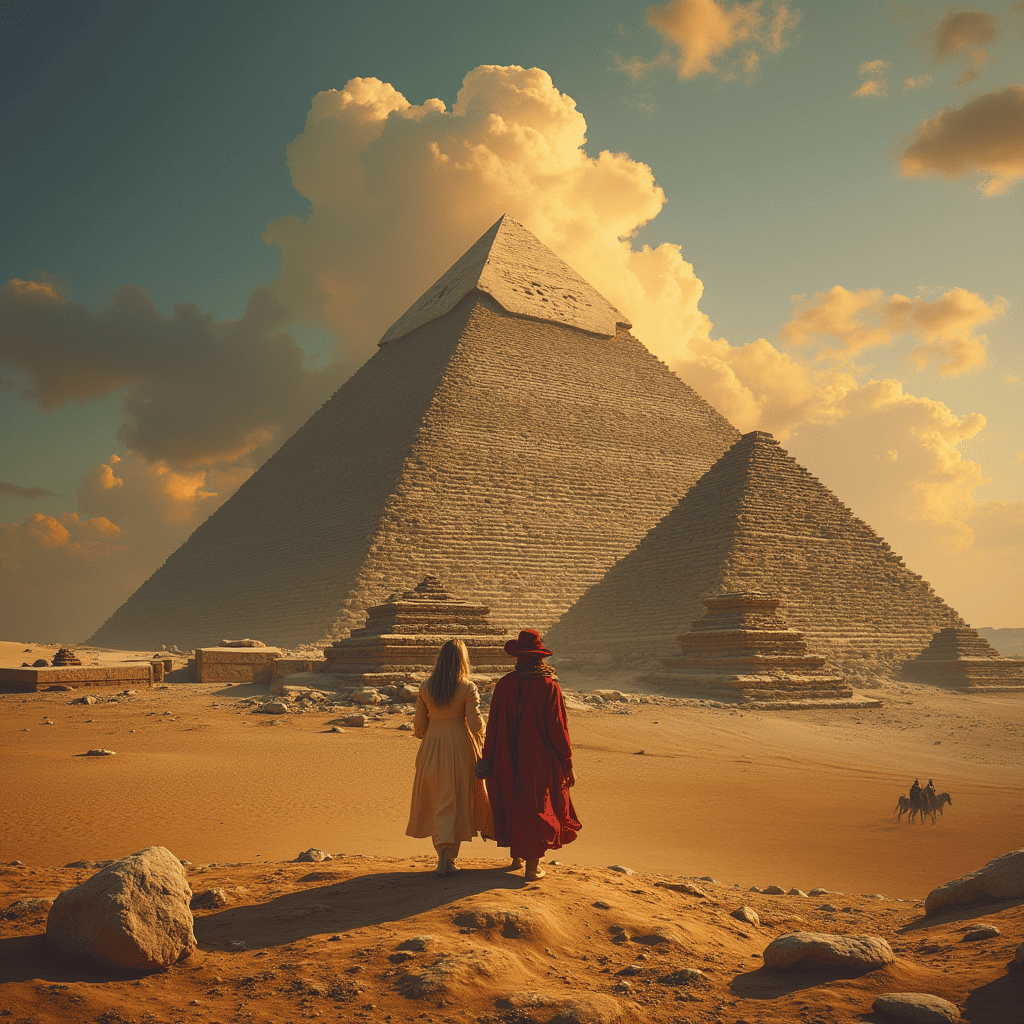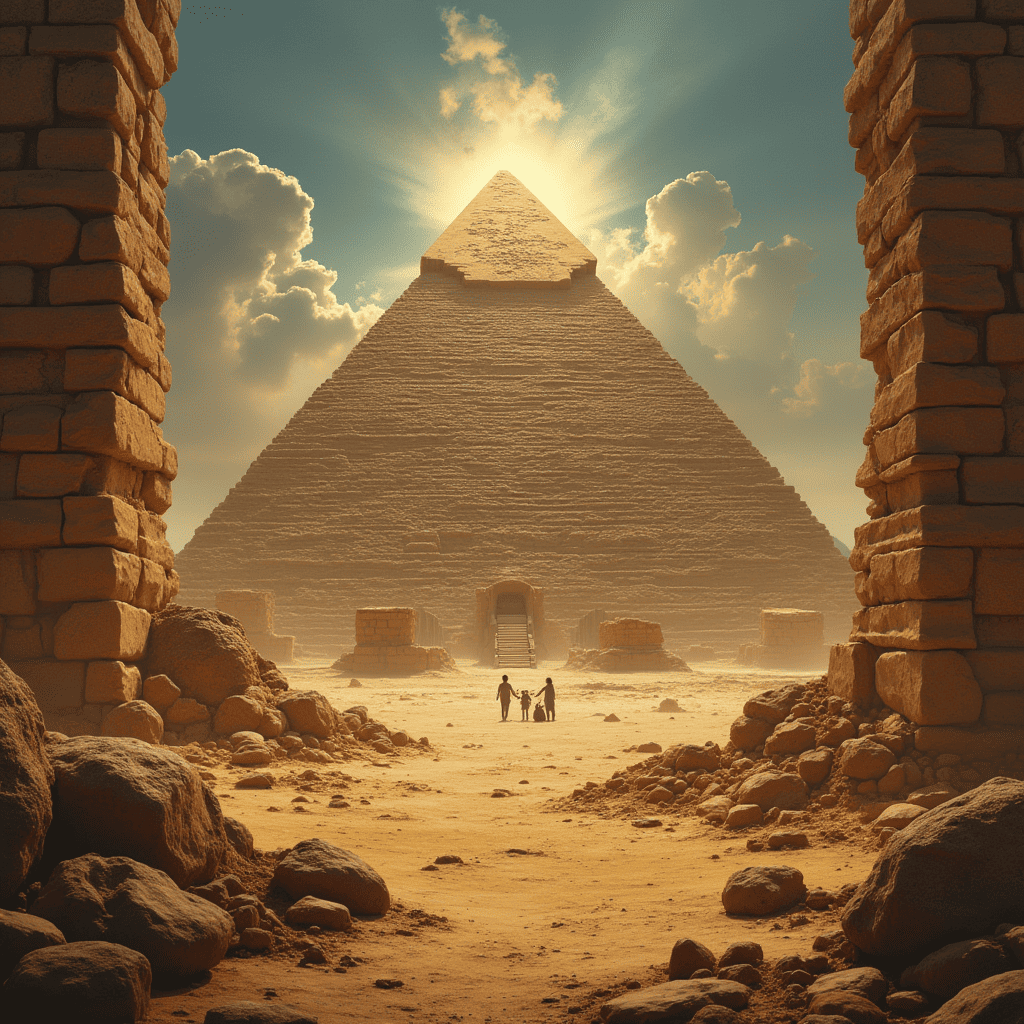The secrets about the pyramids of Egypt have fascinated historians, archaeologists, and conspiracy theorists for centuries. These colossal structures, built over 4,500 years ago, stand as a testament to the ingenuity of ancient civilizations—yet their true purpose and construction methods remain shrouded in mystery. From the Great Pyramid of Giza’s precise alignment with the stars to the unexplained voids hidden within its walls, each discovery only deepens the enigma. Why were they built with such mathematical perfection? What lost technologies might the ancients have possessed? The more we uncover, the more questions arise.
Despite decades of research, mainstream explanations often fall short of answering the biggest secrets about the pyramids. Traditional archaeology teaches that they were mere tombs for pharaohs, but anomalies like the absence of mummies in some pyramids and their advanced astronomical alignments suggest a deeper, possibly spiritual or scientific function. Were they power plants, cosmic gateways, or repositories of forbidden knowledge? This blog post will delve into the most compelling theories, recent discoveries, and lingering secrets about the pyramids that continue to defy logic—and challenge everything we think we know about ancient history.
The Astonishing Engineering Secrets of the Pyramids
How Were the Pyramids Really Built?
The construction of Egypt’s pyramids remains one of history’s greatest engineering puzzles. Mainstream archaeology suggests that tens of thousands of workers used ramps, sledges, and copper tools to haul and place the massive limestone blocks. However, this theory struggles to explain how 2.3 million stone blocks, each weighing 2.5 to 80 tons, were lifted with such precision—especially when the Egyptians left no definitive blueprints or records of their methods.
Alternative theories propose more advanced techniques:
- Internal spiral ramps – Some researchers argue that builders used an internal ramp system, as proposed by architect Jean-Pierre Houdin.
- Water shaft leverage – Evidence suggests canals may have transported stones near the construction site.
- Lost ancient technology – Could the Egyptians have possessed tools or knowledge that has since disappeared?
The mystery deepens when considering the granite blocks in the King’s Chamber, some weighing up to 80 tons, transported from Aswan—over 500 miles away. How did they move these without wheels or pulleys?
Precision Beyond Ancient Technology?
The Great Pyramid’s design reveals mathematical sophistication that seems impossible for its time:
- Alignment with true north – It is oriented within 1/15th of a degree of perfect north, a feat requiring advanced astronomy.
- Pi (π) and the Golden Ratio (φ) – The pyramid’s base-to-height ratio (440 cubits x 280 cubits) approximates 2π, while its proportions reflect φ (1.618). Was this intentional?
- Geodetic marker? – Some believe its latitude (29.9792°N) matches the speed of light (299,792 km/s)—an eerie coincidence or encoded knowledge?
Mainstream scholars argue these are coincidences, but the precision is undeniable. Did the builders possess lost scientific knowledge passed down from an even older civilization?
The Hidden Chambers and Unexplored Passages
Recent technological advances have revealed previously unknown voids within the pyramids:
- The “Big Void” (2017) – A 30-meter-long chamber detected above the Grand Gallery via muon radiography—what’s inside?
- Thermal anomalies – Infrared scans show unexplained heat signatures in the Great Pyramid’s lower chambers.
- Blocked shafts in the Queen’s Chamber – Robot explorations found copper handles and hidden doors, but their purpose remains unknown.
Why were these chambers sealed? Do they contain lost artifacts, sacred texts, or even advanced technology? Egyptologists debate whether these voids were structural or held deeper significance.
The Controversial Theories Behind the Pyramids
Did Aliens or Advanced Civilizations Build the Pyramids?
The Ancient Astronaut Theory, popularized by Erich von Däniken, suggests that extraterrestrials or a highly advanced pre-flood civilization provided the knowledge to build the pyramids. Proponents point to:
- Mathematical precision beyond known Egyptian capabilities.
- Lack of tool marks on some granite blocks, hinting at advanced cutting methods.
- Myths of “gods” guiding construction, like Thoth or Osiris.
Mainstream archaeology dismisses this, citing:
- Evidence of worker settlements near Giza.
- Gradual development from mastabas to step pyramids before smooth pyramids.
- No physical proof of alien intervention.
Yet, the debate rages on—could the truth be a mix of human ingenuity and lost knowledge?
The Lost Civilization Hypothesis
Some researchers argue that the pyramids are far older than recorded history suggests:
- Geological erosion patterns on the Sphinx indicate possible rainwater weathering from 10,000+ years ago.
- Atlantis connections – Plato’s writings describe an advanced civilization that could match pyramid-building capabilities.
- Pre-dynastic blueprints? – Were the pyramids based on designs from a forgotten culture wiped out by catastrophe?
If true, this would rewrite history—but without concrete evidence, the theory remains speculative.
The Role of Sound and Energy in Pyramid Construction
Fringe science explores whether the pyramids functioned as energy devices or resonance chambers:
- Harmonic resonance – Some claim sound waves could have helped levitate blocks (as in Tibetan monk legends).
- Electromagnetic anomalies – Experiments show the King’s Chamber amplifies radio frequencies.
- “Pyramid Power” myths – Claims that small pyramid models preserve food or sharpen razors.
While mainstream science rejects these ideas, they persist in alternative research circles. Could the pyramids have been ancient power plants or cosmic antennas?
Final Thoughts
The pyramids’ engineering continues to baffle experts. Were they tombs, energy generators, or something else entirely? Until new discoveries emerge, their true purpose remains one of history’s greatest secrets.

The Dark and Forbidden Secrets of the Pyramids
Curses and Mysterious Deaths Linked to the Pyramids
The infamous “Curse of the Pharaohs” gained global attention after the 1922 discovery of Tutankhamun’s tomb, when several expedition members died under strange circumstances. Lord Carnarvon, the expedition’s financier, succumbed to an infected mosquito bite just months after entering the tomb, while others suffered untimely deaths—fueling speculation of supernatural retribution.
But is there any truth to the curse?
- Scientific explanations point to toxic mold (aspergillus), ancient pathogens, or radiation traps (some theorize the pyramids contained uranium-lined chambers).
- Psychological factors—suggestibility and fear may have played a role in the “curse’s” power.
- Unexplained cases persist, like the sudden deaths of archaeologists who handled certain artifacts or violated sealed chambers.
Whether coincidence or something more sinister, the curse remains a chilling part of pyramid lore.
Secret Knowledge of the Ancient Priests
The pyramids may have served as more than tombs—they could have been esoteric initiation chambers for high priests. Ancient texts suggest the structures were linked to:
- Hermeticism – The legendary sage Hermes Trismegistus allegedly encoded sacred wisdom in their design.
- Sacred geometry – The pyramids’ proportions reflect cosmic harmonics, possibly used for consciousness elevation.
- Astral travel & rituals – Some believe the King’s Chamber was an energy amplifier for spiritual journeys.
Evidence comes from:
- The Emerald Tablets, which describe lost alchemical secrets tied to the pyramids.
- The Dendera Light hieroglyphs, interpreted by some as ancient energy devices.
- Freemasonic traditions, which trace their rites to pyramid builders.
Were the pyramids a gateway to divine knowledge—now lost to time?
Suppressed Discoveries and Government Cover-ups
Many researchers allege that critical findings about the pyramids are being hidden:
- The Hall of Records – Edgar Cayce prophesied a hidden chamber beneath the Sphinx holding Atlantean archives. Despite ground-penetrating radar (GPR) anomalies, excavations are restricted.
- Zahi Hawass’s secrecy – Egypt’s former antiquities minister has been accused of blocking independent studies of new voids.
- Classified artifacts – Rumors persist of advanced tools or crystalline objects found in sealed chambers, confiscated by authorities.
Why the secrecy? Possible motives include:
- Protecting religious sentiments.
- Controlling historical narratives.
- Hiding technology that could rewrite human history.
Modern Discoveries and Unsolved Pyramid Mysteries
Recent Archaeological Breakthroughs
Cutting-edge tech is revealing new clues:
- Infrared thermography (2016) detected unexplained heat spots in the Great Pyramid.
- Cosmic-ray muon imaging mapped hidden corridors, including the “Big Void.”
- Drone surveys uncovered lost settlements near Giza, hinting at a larger complex.
Most intriguingly, Nefertiti’s undiscovered tomb may lie in a hidden chamber near Tutankhamun’s burial site—scans show tantalizing anomalies.
The Biggest Unanswered Questions
Despite progress, mysteries endure:
- Why such precision? The pyramids align with Orion’s Belt within millimeters—how?
- What’s inside the “Big Void”? Is it a burial chamber, a construction gap, or something else?
- How were granite boxes in the Serapeum carved? Their laser-like precision baffles engineers.
What Future Research Might Reveal
Next-gen tech could solve these enigmas:
- AI analysis of hieroglyphs may decode lost building techniques.
- LiDAR and quantum sensors could map entire underground networks.
- DNA testing of pyramid workers’ remains might reveal unknown civilizations.
Some predict a “Hall of Records” discovery by 2030—potentially rewriting history.

Conclusion
The pyramids of Egypt stand as silent sentinels of a forgotten past, guarding secrets that have defied explanation for millennia—from their impossible precision and hidden chambers to the eerie curses and whispers of lost technologies. Despite centuries of study and cutting-edge advancements in archaeology, these ancient wonders continue to challenge our understanding of history, science, and human capability. As new technologies like AI, quantum imaging, and space-based scanning push the boundaries of exploration, we inch closer to revelations that could rewrite civilization’s origins—yet the pyramids stubbornly cling to their deepest mysteries. Perhaps their greatest lesson is humility: that some truths, buried beneath layers of time and stone, may remain just beyond our grasp, inspiring future generations to keep searching, questioning, and marveling at humanity’s most enigmatic achievements. The day we uncover the pyramids’ final secrets may be the day we rediscover a forgotten chapter of our own story.
Which mystery fascinates you the most? Could the answers lie in plain sight—or are they hidden where no one has dared to look? Share your thoughts below!

